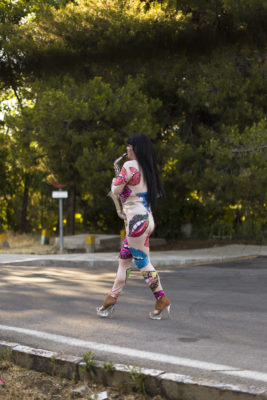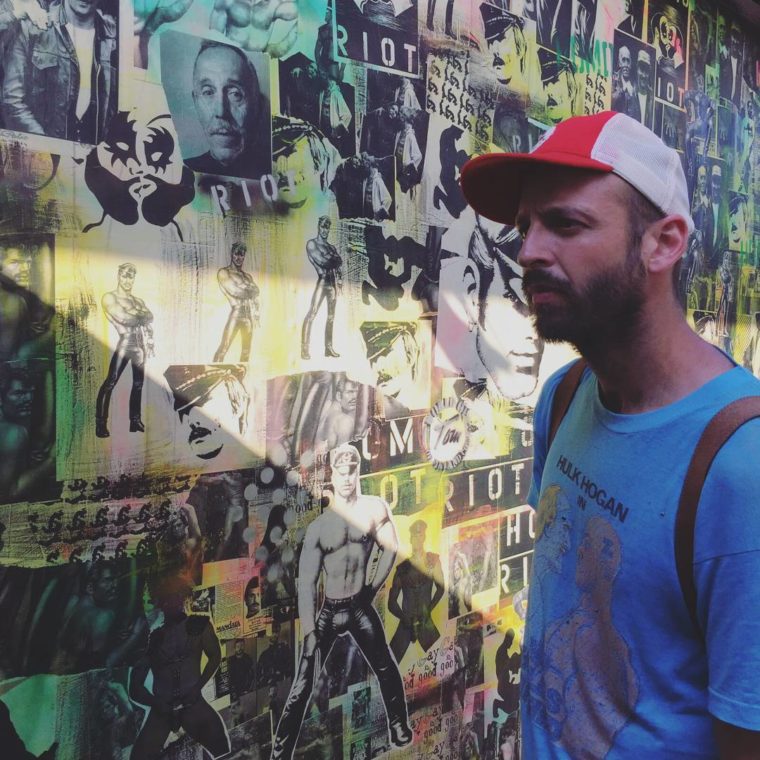Search
To search for an exact match, type the word or phrase you want in quotation marks.
A*DESK has been offering since 2002 contents about criticism and contemporary art. A*DESK has become consolidated thanks to all those who have believed in the project, all those who have followed us, debating, participating and collaborating. Many people have collaborated with A*DESK, and continue to do so. Their efforts, knowledge and belief in the project are what make it grow internationally. At A*DESK we have also generated work for over one hundred professionals in culture, from small collaborations with reviews and classes, to more prolonged and intense collaborations.
At A*DESK we believe in the need for free and universal access to culture and knowledge. We want to carry on being independent, remaining open to more ideas and opinions. If you believe in A*DESK, we need your backing to be able to continue. You can now participate in the project by supporting it. You can choose how much you want to contribute to the project.
You can decide how much you want to bring to the project.

In 2015, I was invited to do a performative conference at CA2M within the framework of the Universidad Popular. They had asked me to talk about my projects and I realized that these all had the same starting point: the city of Barcelona. The proposal came at a time when I was looking for strategies that would allow me to transport drawing to other disciplines. Thinking about the performative element, I wanted to introduce two things as structural elements in my presentation: the first, a desire to dance and; the second, a geographical space, the Alfajarín service area, located halfway between Barcelona and Madrid.
Years ago, I had made several bus trips from Barcelona to Madrid and the rest stop in Alfajarín had always caught my attention. Perhaps because it was a dead place, which no one knows exactly how to find on a map and where everyone seems lost in nothingness. On one occasion, I made this same trip with friends. We had left Barcelona at night and would arrive in Madrid first thing in the morning. As the bus was practically empty and we wanted to have fun, we made up a game. Taking advantage of the fact that many of the passengers were sleeping, we decided to creep silently down the aisle of the bus, making sure no passenger noticed, as the Ninja Turtles do or as Catherine Zeta-Jones did in the famous scene from Entrapment in which she has to dodge a series of laser beams. The memory of this nocturnal trip helped me to invent a character: the Ninja Turtle of Alfajarín. Thinking about it now, I can’t see any logic in that idea, maybe I just thought it was a good strategy to avoid boring the public during my conference. I wanted to generate a moment of conciliation in which I would transform myself into a Ninja Turtle and invite the audience to emulate a bus trip through dance. I added to the proposal a choreography in which all the movements of my body made reference to the automotive industry. The music and the song accelerated more and more and the dance ended in a conga line that traveled an imaginary highway in the direction of Alfajarín. I wanted to represent a journey based on a collective experience between people who do not know each other at all but who, nonetheless, share a moment of great intensity that is difficult to reproduce.
Usually in my work I talk about things that have happened in another place or at another time. This often involves research, and a physical and mental journey. What interests me about these trips, in addition to personal experience, is the possibility of sharing them, of making them accessible. In this return there is always a need for adaptation: how can I transfer what I was passionate about? How can I move someone in the same way that I was moved? I am interested in the idea of a nomadic spectacle. For years, I have worked with classical mythology, but also with local and popular history as a source of myths. It was Ainara Elgoibar, with whom I have collaborated on different projects, who made me realize something very relevant: myths do not belong to a single place, they adapt and in that adaptation they are transformed. The place where they are located is not important, it can be a service station in Zaragoza, a Greek island or the west coast of the United States, yet somehow they all participate in the same thing.
I traveled to Los Angeles to conduct research based on the Robert Prager archives in the ONE Archives Foundation. I remember it as a road-movie that took place between the archives and the scenes of the events. The research was not located exclusively in the archive space, it was important to find out what was still left of it all. Since I don’t know how to drive, my possibilities to move around the city were very limited. Then, I found myself studying a group of bikers who connected through photocopies, reading their correspondence and linking up Uber rides to visit the key places in which this subculture was celebrated. I experienced Los Angeles on the move, going from one place to another. The residency was in Santa Monica, I had to take the subway to West Hollywood, where the archive was, and from there find other transportation. I had the sensation of constantly circulating, crossing the city or reading and moving around papers and photocopies of those who made movement and driving a kind of relationship. Much of the correspondence I found in the archive referred to the need to connect people who lived in different parts of the United States. Their meeting point, the place that defined them as a group, was, undoubtedly, the road, perhaps because in the end the road was a safe space. By moving away from the city they were able to develop a folklore, to act and relate to each other in ways that in the public space of the city were not considered acceptable. I became interested in the ambiguity between the idea of inner, subjective journey and the real journey, in community. My research focused on developing graphic imagery for a practice that is invisible, because in the case of fisting it happens inside the body. In this sense, a curious detail is that the routes of their excursions when traced on the map seem to refer to parts of the body, such as the intestines, as if the road revealed a hidden iconography through the same journey.
More recently, Jaime González Cela and Manuela Pedrón Nicolau asked me to participate in the 2019 edition of Mutaciones (Mutations) with a delocalized project that would serve as a common thread. A bus trip was scheduled that would initially cover each of the interventions distributed among different museums in Madrid. Although the first idea was to use the bus as a specific space, I finally proposed to the curators to take the viewers by surprise to a secret destination where my proposal would take place. The confusion among the viewers/passengers gave rise to an unexpected situation, an experience somewhere between a La Cubana and Cluedo show. The place where we took them was the Gurugú, a roadside bar located between Villalbilla and Alcalá de Henares that the owners had to close due to a change in the layout of the neighboring highway. I wanted to create a mobile show without a specific place and that at the same time served to bring it all together. A piece without a defined shape that, once again, introduced a performative element. The title, Discord, referred to a cartoon character. The body of this character is made from fragments of different animals that are constantly changing. With the performance I wanted to invoke Discord, so we planned the participation of Tavi Gallart as if she were an apparition. She appeared in the middle of the road with a saxophone and even though the sound system did not work she managed to play songs using the mobile phone and her high heel shoe as an amplifier.
The reason I started working with photocopies was because it was inexpensive. I wanted to show my drawings, but I needed to find a medium that I could afford. Making fanzines made me think about the loss involved in transferring a personal experience to drawing, but also about the loss of control over your own drawings when they are distributed and passed from hand to hand, sometimes without even the one who receives them knowing who the author of the fanzine is. On this strange journey sometimes things come back. My experiences with self-publishing helped me understand photocopy not only as a medium but as an object with its own presence, and to understand drawing as an expanded field. We assume that drawing is easy to distribute and store, especially when you work with photocopies or on paper, but when the drawing expands it demands an occupation of space. Even so, I never think in terms of storage or conservation, but rather from the spatial logic of the place. For example, I thought of the sets for The Mystery of Cavira as a group of removable and folding structures that could be transported by a single person and by Metro. I find it very curious how the possibilities of transporting a piece between a workshop and an exhibition space, or even storage conditions, end up deciding many of the formal questions of a project and how, strangely enough, they can determine the meaning of an exhibition.
(Featured Image: A “Discord” Antoni Hervás invited Tavi Gallart to perform at an abandoned service station. Photo: Galerna Foto).

Antoni Hervàs is an artist. His work has been exhibited in institutions such as CA2M, La Casa Encendida, MACBA, La Capella and the Joan Miró Foundation. He has been an artist in residence at Gasworks and HANGAR and was a fellow of the Botín Foundation and the La Caixa Foundation. In 2016, he received the City of Barcelona Prize for Visual Arts. He lives and works in Barcelona.
"A desk is a dangerous place from which to watch the world" (John Le Carré)